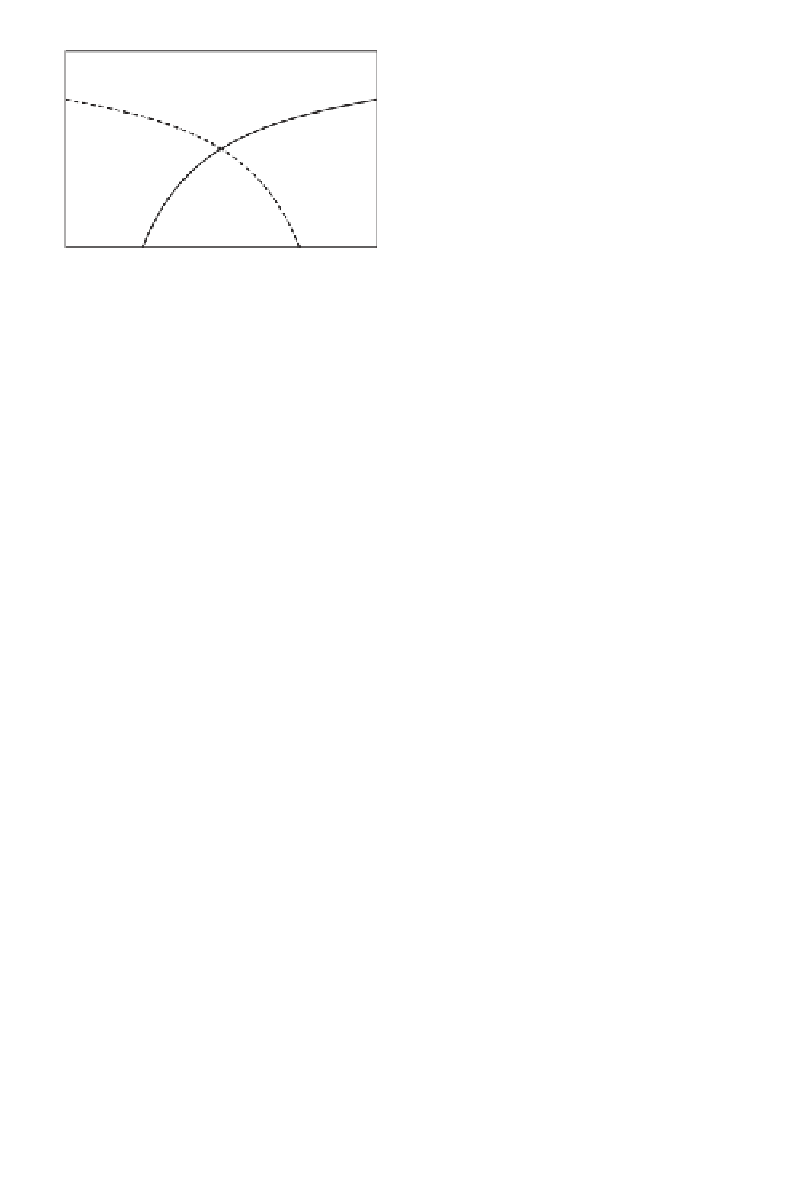Geography Reference
In-Depth Information
= 0.9
= 0.7
1
1
1
2
1
2
0.5
0.5
0
0
-0.5
-0.5
-1
-1
0
0.2
0.4
0.6
0.8
1
0
0.2
0.4
0.6
0.8
1
x
x
= 0.5
= 0.2
1
1
1
2
1
2
0.5
0.5
0
0
-0.5
-0.5
-1
-1
0
0.2
0.4
0.6
0.8
1
0
0.2
0.4
0.6
0.8
1
x
x
Figure 24
.
1 Location proi ts (24
.
17) as a function of i rms' geographical distribution for
dif erent values of the transportation cost
t.
Other parameters are
s
= 4 and
a
= 1
t) the proi t function is essentially determined by the 'cost sharing' term and is monot-
onically increasing with decreasing marginal proi ts (upper panels of Figure 24.1). In this
case, when i rms' concentration is low, i rms do not benei t from the technological exter-
nality and their proi ts are low too, but when concentration increases, proi ts increase
monotonically as i rms exploit the 'cost sharing' opportunity. The more the i rms in one
location, the lower the positive contribution of an extra i rm locating there, so that the
marginal proi t decreases. With high transportation costs (low t) the shape of the proi t
function is still monotonic (bottom panels of Figure 24.1), but marginal proi ts are i rst
decreasing and then increasing. With low i rm concentration the technological externality
dominates and marginal proi ts are decreasing. As the concentration increases, the posi-
tive ef ect of the cost sharing is almost of set by the negative market interaction, which
acts as a constraint on the local demand faced by i rms. In this case, even if proi ts are
still increasing the marginal proi t is almost zero. As the concentration of i rms increases
further, proi ts increase more steadily because low local demand is now compensated by
the foreign demand, so that the contribution of the pecuniary externality is positive too.
Judging from Figure 24.1, irrespective of the transportation costs, the positive ef ect of
technological externalities dominates the negative ef ect of pecuniary externalities: i rms
make most proi ts by agglomerating on one side and border distributions are always an
equilibrium. This is formalized in Proposition 2.




































































































